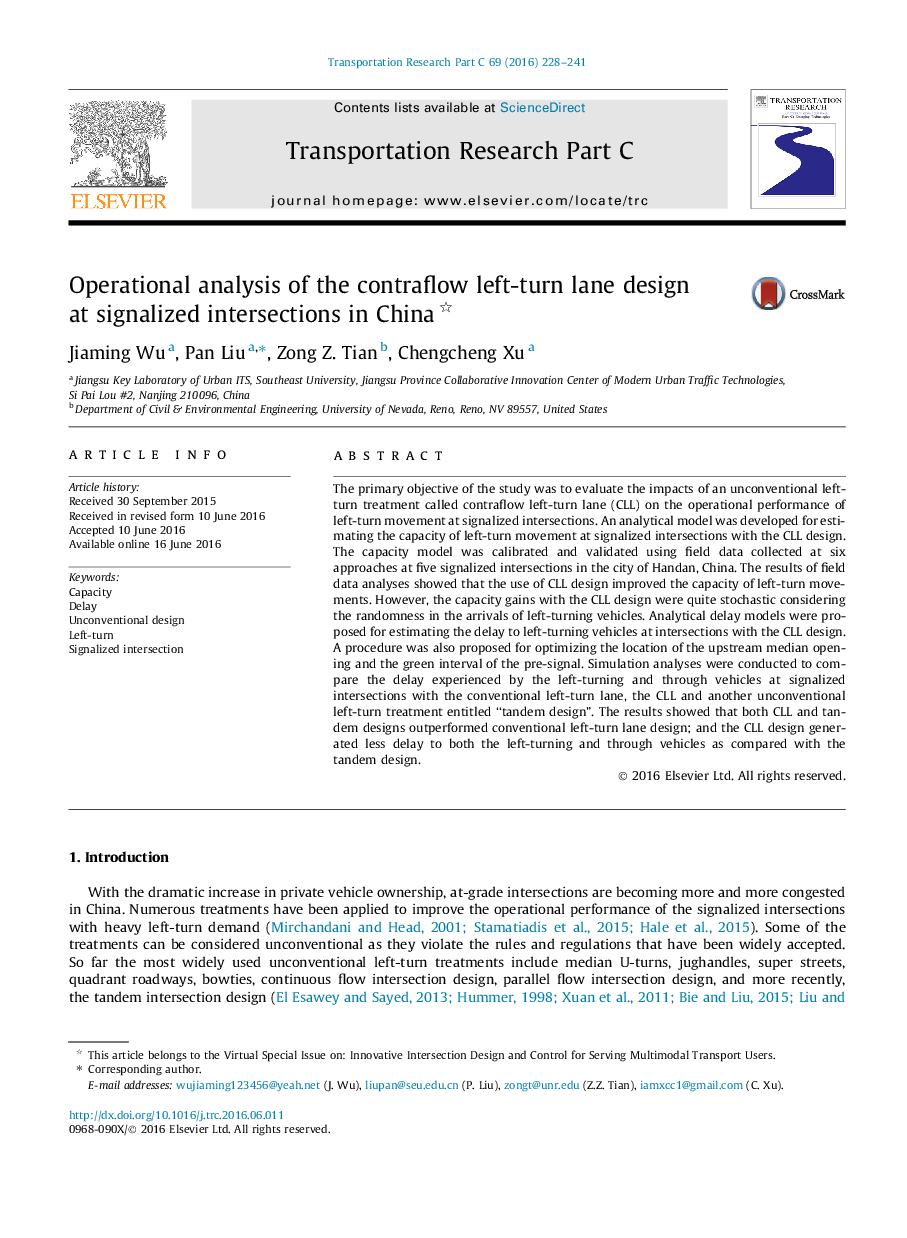| Article ID | Journal | Published Year | Pages | File Type |
|---|---|---|---|---|
| 524728 | Transportation Research Part C: Emerging Technologies | 2016 | 14 Pages |
•We evaluate the impacts of the CLL design on capacity of left-turn movement at signalized intersections.•Analytical models are developed for estimating capacity and delay of left-turn movement with the CLL design.•The use of CLL design improves capacity of left-turn movements.•An optimization procedure is proposed for optimizing the CLL design.•The CLL design outperforms the conventional left-turn lane design and the tandem design in reducing delay.
The primary objective of the study was to evaluate the impacts of an unconventional left-turn treatment called contraflow left-turn lane (CLL) on the operational performance of left-turn movement at signalized intersections. An analytical model was developed for estimating the capacity of left-turn movement at signalized intersections with the CLL design. The capacity model was calibrated and validated using field data collected at six approaches at five signalized intersections in the city of Handan, China. The results of field data analyses showed that the use of CLL design improved the capacity of left-turn movements. However, the capacity gains with the CLL design were quite stochastic considering the randomness in the arrivals of left-turning vehicles. Analytical delay models were proposed for estimating the delay to left-turning vehicles at intersections with the CLL design. A procedure was also proposed for optimizing the location of the upstream median opening and the green interval of the pre-signal. Simulation analyses were conducted to compare the delay experienced by the left-turning and through vehicles at signalized intersections with the conventional left-turn lane, the CLL and another unconventional left-turn treatment entitled “tandem design”. The results showed that both CLL and tandem designs outperformed conventional left-turn lane design; and the CLL design generated less delay to both the left-turning and through vehicles as compared with the tandem design.
